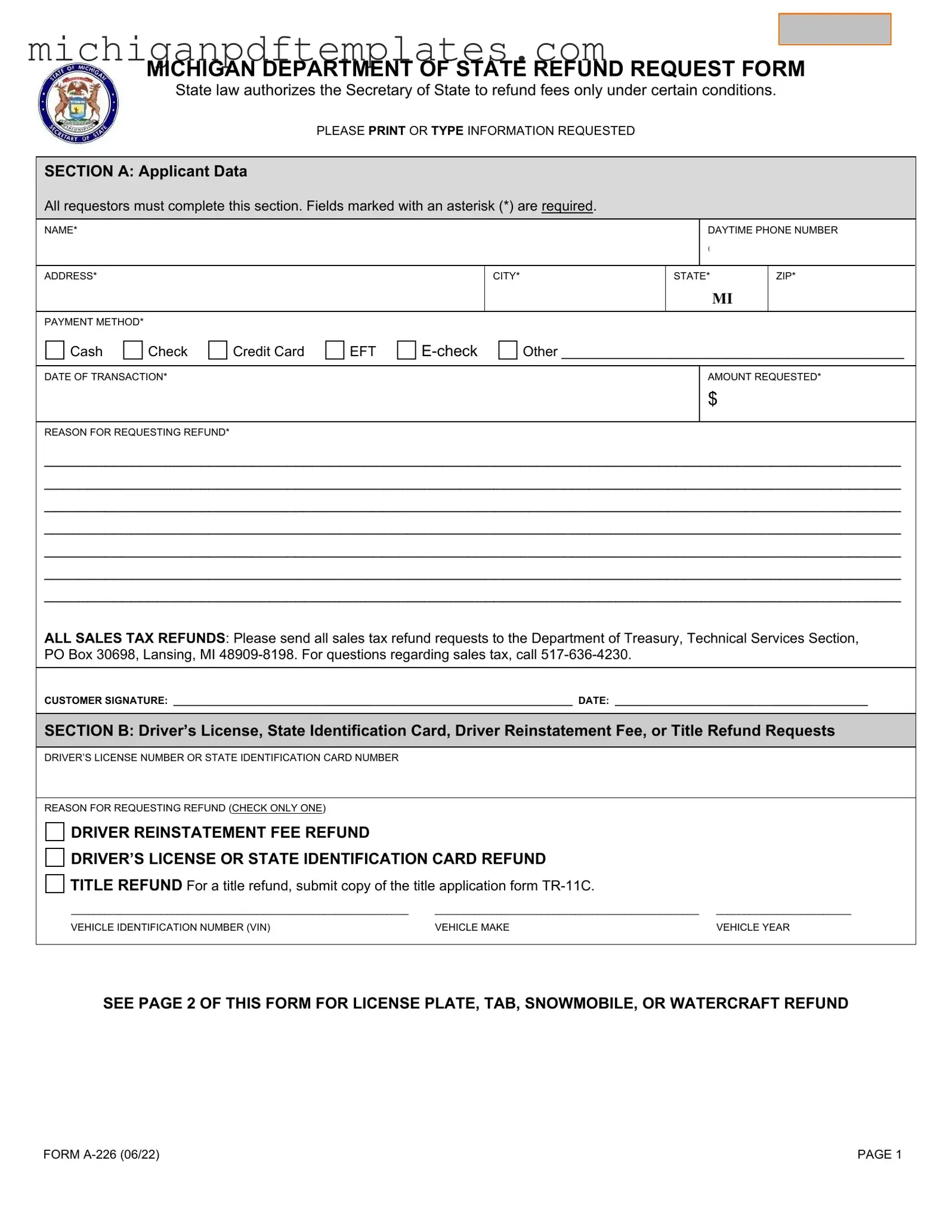The Michigan A 226 form serves as an essential tool for individuals seeking refunds from the Michigan Department of State. Designed for various refund requests, this form addresses multiple scenarios, including refunds for driver’s licenses, state identification cards, vehicle titles, and registration fees for vehicles, snowmobiles, and watercraft. Applicants must provide detailed personal information, including name, address, and payment method, along with the date of the transaction and the amount requested. Specific reasons for the refund must be clearly stated, whether it’s due to a sale, overpayment, or other qualifying circumstances. Additionally, the form outlines distinct sections for different types of refund requests, ensuring that users can easily navigate the process based on their needs. For sales tax refunds, applicants are directed to a separate department, emphasizing the form's focus on state fees. Completing the A 226 form accurately is crucial, as it includes requirements for documentation, such as proof of payment and, in some cases, death certificates or original registrations. Understanding these components will streamline the refund process and help ensure that applicants receive their funds in a timely manner.
